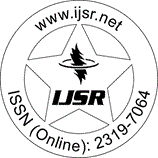Downloads: 13
India | Computer Science Engineering | Volume 14 Issue 3, March 2025 | Pages: 1004 - 1009
Study of Marathi Text Summarization using Natural Language Processing
Abstract: Text summarization is one of the most essential tasks in natural language processing (NLP), as it attempts to reduce big text bodies while retaining key information. Although much research has been conducted in this field for English texts, studies on other languages, such as Marathi, is absent. This study focuses on comparative study of various ways for extractive and abstractive automatic text summarizing and evaluates how well they capture the semantic core of Marathi text, as well as the complex nature of Marathi language structures and linguistic elements required for accurate summarization. It also analyses how summarization models function as they deal with the linguistic complexity and syntactic variation seen in Marathi texts, with a focus on creating clear yet useful summaries while accounting for context sensitisvity, word order, and morphological diversity. Each of these strategies has unique challenges that can be handled through using a specific variation of that strategy.
Keywords: Text Summarization, Natural Language Processing (NLP), Marathi Language, Abstractive
How to Cite?: Vaishali S. Kapse, Dr. Sonal S. Deshmukh, "Study of Marathi Text Summarization using Natural Language Processing", Volume 14 Issue 3, March 2025, International Journal of Science and Research (IJSR), Pages: 1004-1009, https://www.ijsr.net/getabstract.php?paperid=SR25321000100, DOI: https://dx.doi.org/10.21275/SR25321000100
